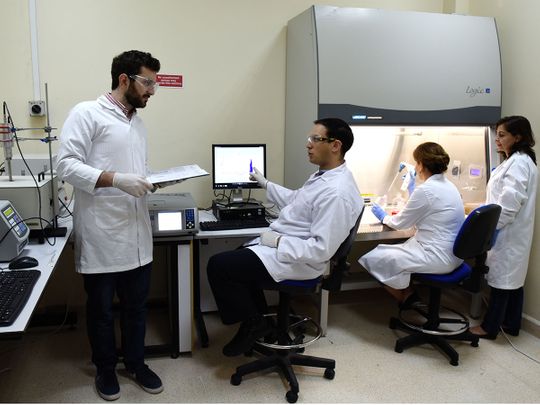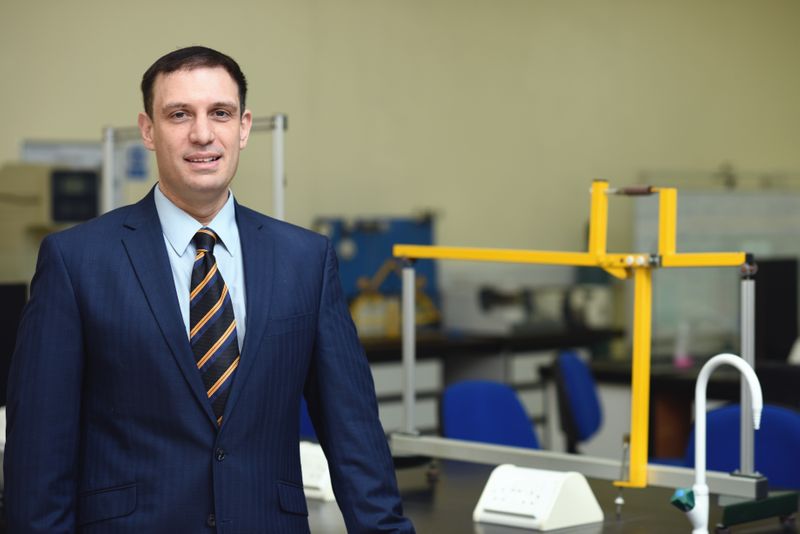
Highlight
The researchers have put the UAE at the forefront of cancer study, with the development of tiny capsules that allow the targeted treatment of cancerous cells
The UAE could soon show the way on the treatment of breast cancer. Researchers at the American University of Sharjah (AUS) have recently had their patent accepted for a chemotherapy platform that uses minute capsules to target cancerous cells while bypassing healthy cells, thus reducing the treatment’s adverse effects.
“We have been working on the approach since 2016, and have just received the notice of allowance,” says Dr Ghaleb Husseini, Professor of chemical engineering and founder of the Ultrasound in Cancer Research group at the AUS.
The treatment targets the human epidermal growth factor receptor 2 (HER2) gene, using a key-and-lock mechanism, where a specific antibody targets, or locks on to, a specific antigen. Genes hold the recipe for the different proteins a cell requires in order to work normally. The HER2 gene has been found to sometimes play a role in the development of breast cancer, but it can also indicate how the cancer could respond to a specific treatment. In up to a third of early-stage breast cancers, the HER2 gene, also called the HER2/neu and ErbB2 gene, doesn’t work correctly, and may make many copies of itself and the corresponding HER2 protein — up to 50 or 100 fold, explains Dr Husseini.

Antibodies, or proteins used to neutralise pathogens, can be administered intravenously to arrest the growth of tumorous tissues and destroy them. A specific antibody treatment, Trastuzumab, sold under the commercial name Herceptin, can be used in conjunction with chemotherapy drugs, including paclitaxel, docetaxel, and vinorelbine, to manage breast cancers with HER2 gene amplification. The drug is available for treatment in the UAE, with the treatment lasting about one year, Dr Husseini says.
His team’s approach uses Herceptin to target the receptors on the surface of the breast cancer cells. “We first encapsulate a chemotherapy drug inside liposomes [tiny capsules] and we conjugate Herceptin to their surface,” he explains.
“Once the nanovehicles reach and bind to the breast cancer tissues, the drug is released using ultrasound waves. This will ensure the delivery of high concentrations of the therapeutic to the diseased tissues while avoiding its interaction with healthy cells in the body, thus reducing the side effects of conventional chemotherapy.”
The team is currently conducting in vivo studies to test the feasibility of this novel breast cancer treatment platform.
Breast cancer prevention, diagnosis and treatment is a dynamic field, with researchers studying different aspects of the disease and new ways to fight it. We spotlight some recent new developments
PREVENTION
Hereditary signatures
Mutations of the genes BCRA1, which Angelina Jolie famously carries, and BCRA2, are known to raise a person’s risk of breast cancer. Now next-generation gene-sequencing techniques are pinpointing other hereditary cancers. By testing the saliva and blood of people from families with strong histories of cancer, medical experts will soon be able to offer preventive screenings and help identify cancer earlier than ever.
DIAGNOSIS
Liquid biospies
A new type of biopsy identifies and tests circulating tumour cells (CTCs) and circulating tumour DNA (ctDNA) in the bloodstream. Sometimes called a liquid biopsy, this type of tissue sampling is less expensive and less invasive than the customary needle biopsy and lowers the risk of bleeding and infection. While more tests are needed before liquid biopsies become the standard, they could potentially flag up gene mutations in tumour cells and help determine medicinal approaches.
TREATMENT
Less chemotherapy
A 2018 study showed that chemotherapy may not benefit 85% of early breast cancer patients over the age of 50, who exhibited the HR+ (hormone receptor positive) or HER2- variants, and whose cancer had not spread to the lymph nodes. The research, which looked at 21 different genes in primary tumours, showed that these patients could safely omit chemotherapy in their treatment.
Inhibiting repair
Some ovarian cancer treatments work by blocking an enzyme called PARP within cancerous cells, preventing damaged DNA from repairing itself, killing off the diseased cells in the process. These oral formulations are a type of targeted therapy that are now being tested against treat breast cancer, with two Phase III clinical trials in the works.
Oestrogen blockers
Patients with HR+ – or hormone receptor-positive – breast cancers may be recommended oestrogen reducers such as letrozole and anastrozole to starve tumour cells. Research has shown that those patients fare better when hormone therapy is combined with CDK4/6 inhibitors, which prevent cancer cells from dividing. This line of approach is being more commonly prescribed for patients with metastatic HR+ breast cancer, changing the way this particular variant is treated.
Anti-androgen therapy
Some 60 per cent of breast cancer cells also have receptors for androgens, or male hormones. Studies now indicate that some women with triple-negative breast cancer (TNBC) respond to the antiandrogen bicalutamide, which has been used to treat prostate cancer for many years. More research is needed to prove the efficacy of this class of medications conclusively.

